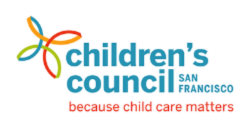Topics
Choosing Child CareFamilies' RightsFamily & Community EngagementFinancial AssistanceLicensing & SafetyParenting & Child DevelopmentProvider ResourcesResource & ReferralSpecial NeedsDevelopmentally Appropriate Practice (DAP) is the method teachers use to provide the best education to each child. This is done by meeting children where they are developmentally, culturally, and individually.
DAP was created by the National Association for the Education of Young Children (NAEYC). It guides teachers and schools to provide the best early childhood education possible.
The NAEYC says that Developmentally Appropriate Practice must be:
- Age appropriate. School activities must be appropriate for each age and developmental stage.
- Culturally aware. Teachers must make an effort to get to know students, their families, and their cultural backgrounds.
- Focused on the individual. Activities must take into account the child’s interests, abilities, and developmental progress.
Developmentally Appropriate Practice is guided by the following 12 principles:
- All areas of development and learning are important.
- Learning and development follow sequences.
- Development and learning occur at varying rates.
- A child’s maturity and experience affects their development.
- Early experiences have profound effects on development and learning.
- Development becomes more complex over time. Development involves self-regulation and symbolic or representational capabilities.
- Children develop best when they have secure relationships.
- Development and learning occur in, and are influenced by, various social and cultural contexts.
- Children learn in a variety of ways.
- Play is an important vehicle for developing self-regulation. Play is also important in promoting language, cognition, and social competence.
- Development and learning advance when children are challenged.
- Children’s experiences shape their motivation and approaches to learning.
In California, all private and public schools should follow the developmentally appropriate principles outlined above.
For more information about Developmentally Appropriate Practice, please visit NAEYC.org.
Sources:
https://www.naeyc.org/resources/topics/dap-introduction
https://www.naeyc.org/resources/topics/dap/3-core-considerations
https://dpi.wi.gov/early-childhood/devel-approp
Was this article helpful?
Similar Resources
Families’ Rights in Choosing Child Care
In California, parents have the right to make the best child care choices for their family. Parents have many options:...Child Care Resource and Referral Agencies (CCR&Rs)
What is a CCR&R? Child care resource and referral agencies (CCR&Rs) serve families, child care providers and the...Licensing and Monitoring for Child Care Facilities in California
Community Care Licensing Information The Department of Social Services, Community Care Licensing (CCL) licenses and moni...Log into your account
Don't have an account? Sign up
Sign up to save your own provider lists
Already have an account? Log in
Create an account with Email Address | Phone Number

